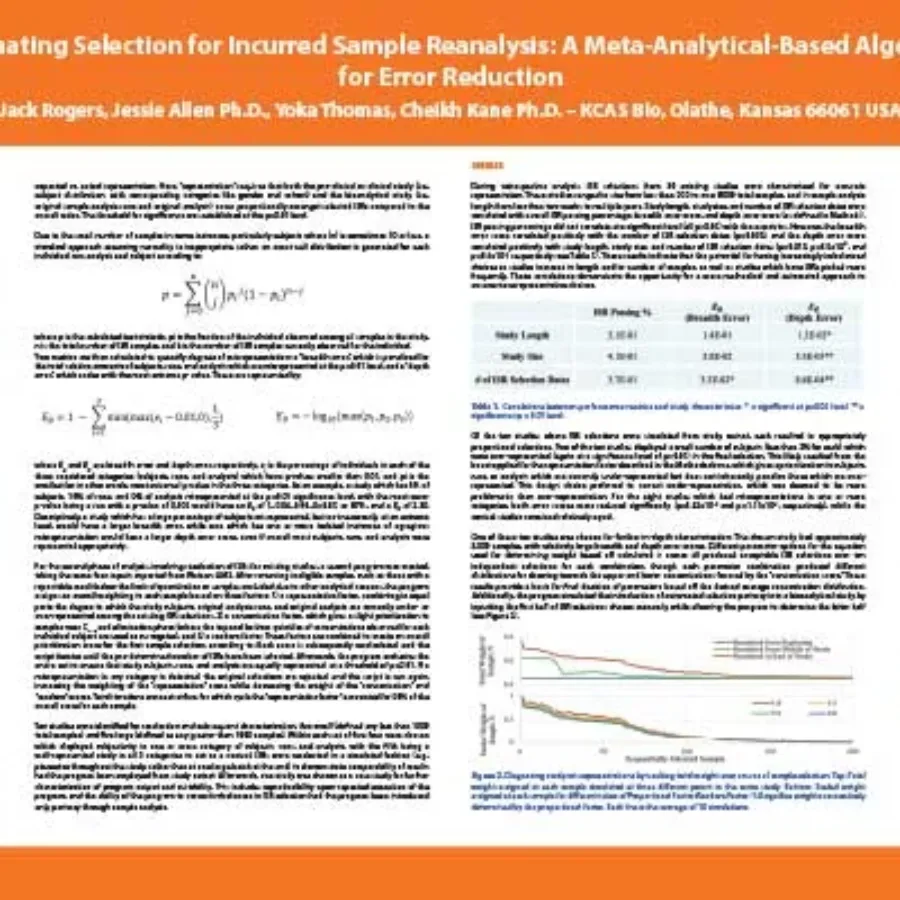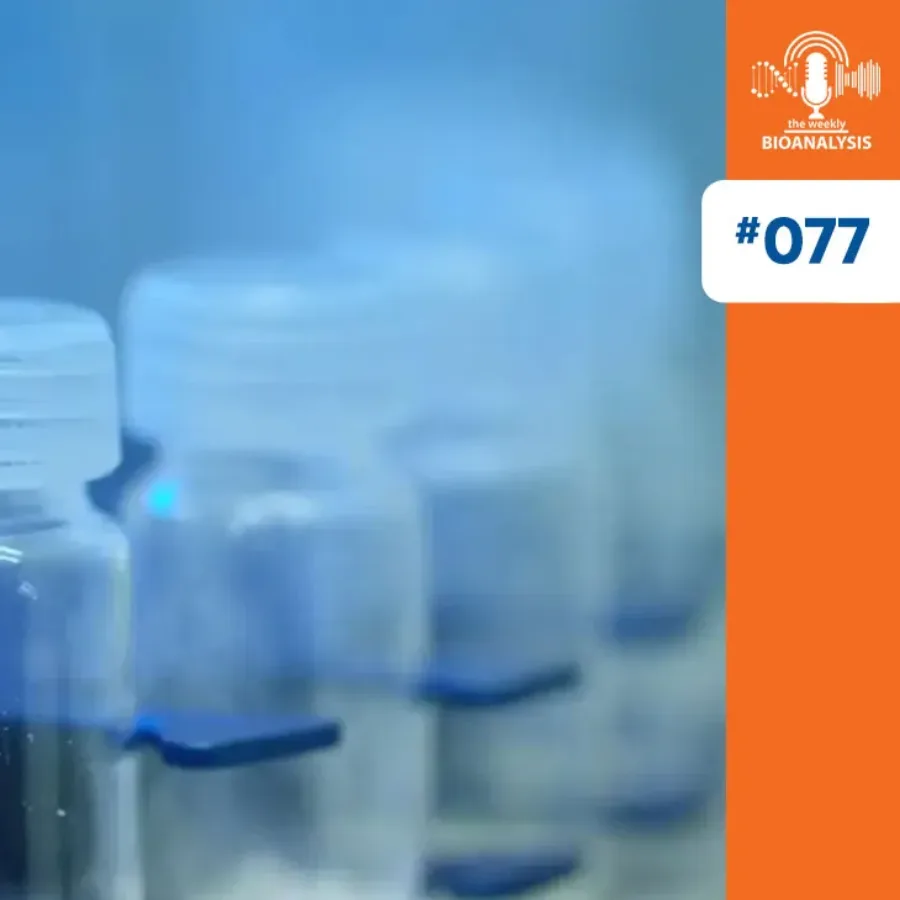 Posters & Papers
Posters & Papers
Please download this poster, “Automating Selection for Incurred Sample Reanalysis: A Meta-Analytical-Based Algorithm for Error Reduction” KCB-poster_WRIB-2024_ISR-MAB-error-reductionDownload…
 Blogs
Blogs
A pharmacokinetic (PK) assays evaluate how the body affects a specific substance after administration which includes: absorption, biodistribution, metabolism, and excretion. Preclinical (or non-clinical) PK assays play a crucial role in drug development and typically focus on assessing drug safety and maximum tolerable dose. For the development of pre-clinical PK…
 October 16
- October 18
October 16
- October 18
Join KCAS Bio at the GMP Symposium in Lyon, France! The GMP Symposium is an annual event organized by the Groupement des Métiers de la Pharmacologie (GMP), founded in 1988 by researchers in the pharmaceutical industry. Governed by French Law, the association aims to promote knowledge exchange and collaboration among…
 October 15
- October 17
October 15
- October 17
Discover the Future of Biologics with KCAS Bio at the Festival of Biologics in Basel, Switzerland. Join us at this premier event to explore the latest trends, developments, and opportunities in the field of biologics. As a leading provider of bioanalytical services, KCAS Bio is excited to participate in this…
 September 18
- September 19
September 18
- September 19
Join KCAS Bio at the Nordic Life Science Days (NLS Days) 2024, an esteemed gathering of life science professionals, innovators, and industry leaders. Taking place in the vibrant city of Malmö, Sweden, NLS Days offers a unique platform for collaboration, networking, and showcasing the latest advancements in the life sciences…
 July 22
- July 25
July 22
- July 25
KCAS Bio is excited to announce our participation in the AAPS Summer Scientific Forum, held in Kansas City, Missouri. As a leading event in pharmaceutical science, this forum provides a unique opportunity for professionals to share knowledge, explore innovative research, and collaborate on the latest advancements in the industry. We…
 June 20
- June 21
June 20
- June 21
KCAS Bio is happy to announce our participation in the 12th edition of the Antibody Industrial Symposium (AIS), taking place in Montpellier, France. As a premier event in the antibody and therapeutic development sector, AIS offers a unique platform for scientific exchange, collaboration, and innovation. We are excited to be…
 June 2
- June 6
June 2
- June 6
KCAS Bio is excited to announce our participation in the 72nd ASMS Conference on Mass Spectrometry and Allied Topics, taking place in Anaheim, California, from June 2-6, 2024. This prestigious event brings together experts and enthusiasts from around the world to discuss the latest advancements and innovations in mass spectrometry.
 June 3
- June 6
June 3
- June 6
KCAS Bio is thrilled to announce our participation in the BIO International Convention 2024 in San Diego, California. This premier event, set for June 3-6, brings together the brightest minds in the biotech and pharmaceutical industries to discuss the latest innovations and advancements. As leaders in bioanalytical services, we are…
 Blogs
Blogs
Charcot, Gehrig, Hawking: A Journey Through ALS When you hear the names Charcot, Gehrig, and Hawking, what comes to mind? These names are all linked by a shared thread: Amyotrophic Lateral Sclerosis, or ALS. ALS, also known as Charcot disease, is named after Jean-Martin Charcot, a neurologist from the Pitié-Salpêtrière…
 Podcasts
Podcasts
Dom and John welcome special guests, Habibi Goudarzi and Rochelle Burke to episode #77 of “The Weekly Bioanalysis”, where they discuss the progression of bioanalytical needs for non-GLP Studies, from Early PK to readiness for GLP Tox Studies. These specialists from the KCAS Bio team begin with an introduction to…
 June 18
- June 18
June 18
- June 18
In conjunction with Cytek and Bio-Rad, KCAS Bio will host an open house on Tuesday, June 18th from 10:00am to 5:00+pm at: KCAS BioSpring House Innovation Park727 Norristown Road. Lower Gwynedd, PA 19002Parking is Directly Next to Building 4 and Building This packed event includes: Presentations: KCAS Bio, Cytek and Bio-Rad will…